Tanzania Safari
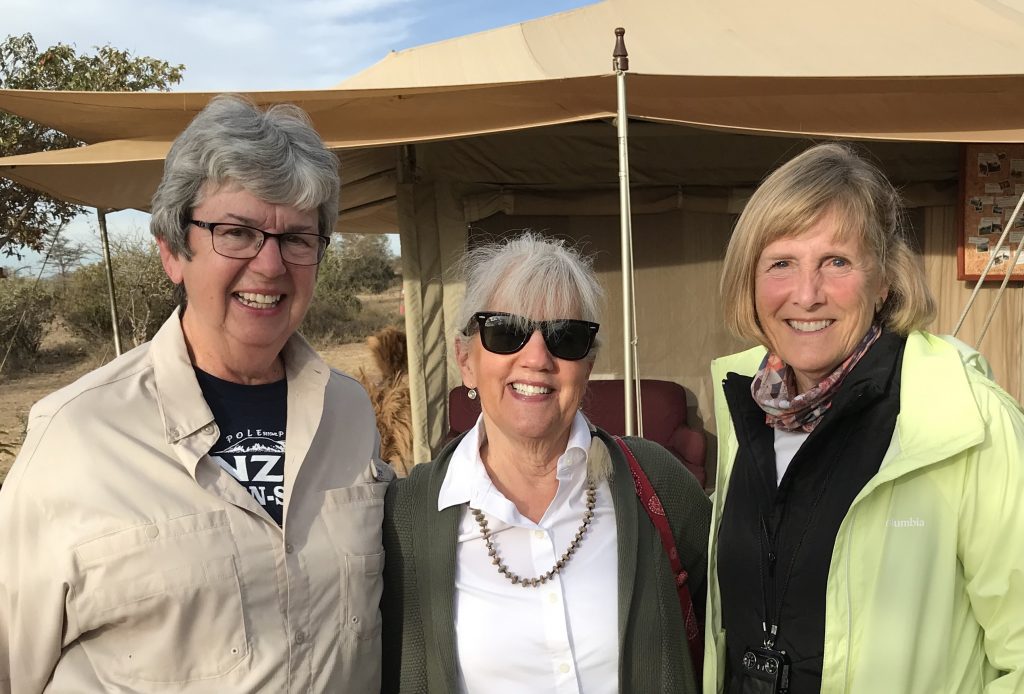
Last spring my friend Kate Richards, of Charlotte, invited me to join her and her friend Martha Campbell on a tour of the Serengeti, October 4-14, led by AdventureWomen. I signed up and we spent ten splendid days in northern Tanzania–magnificent animals, creative Tanzanians, and eight other adventurous women. We three flew to Mount Kilimanjaro airport a day early and enjoyed a blissful day of rest at nearby Mount Meru Game Lodge, before the others arrived that evening. We even caught a glimpse of Mount Kilimanjaro in the distance.
Our first stop the next morning was the Cultural Heritage Center in Arusha, which introduced us to the arts and crafts of Tanzania. I had seen African art at the Smithsonian Museum of African Art and the Museum of African American History and Culture in Washington DC. This album shows what we saw in Arusha. We would return there on our last day to buy gifts. From the tiny Arusha airport, we flew on a single engine prop plane to Wasso, just east of Serengeti National Park. There we met our terrific guides, Freddy and James, who, with their spiffy Land Cruisers, took us to our first lodging, a tent camp in Enashiva.

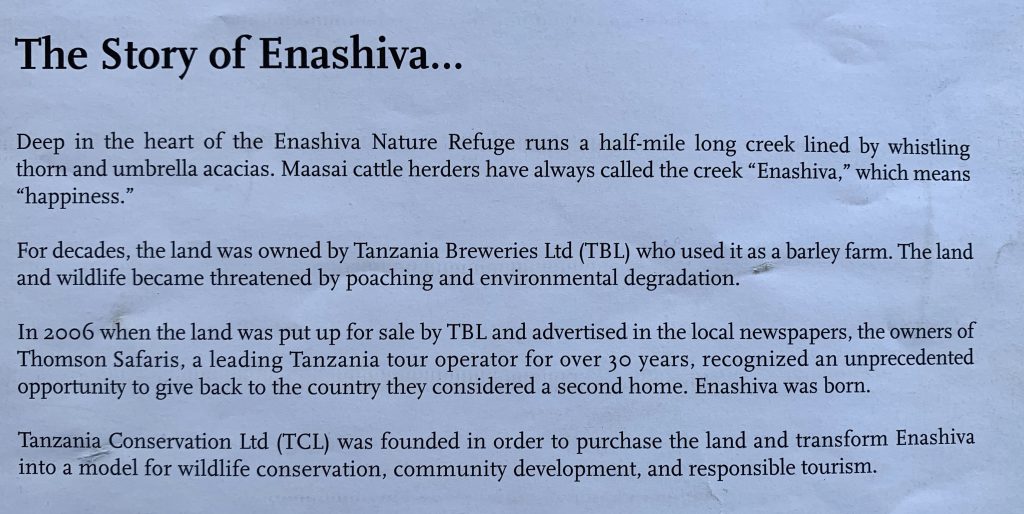
Our accommodations at Enashiva define “glamping,” luxurious tents with porta-potties and hot showers on command. Still, at night the wildebeests harrumphed and the hyenas howled close to our tents. I awoke, as I usually do, at 3:00 am, and had never felt such utter darkness, so far away from home. To control my anxiety, I pictured all my loved ones, one by one, and mentally played through my favorite Bach Preludes. Then I was at peace.
Early the next morning we took a hike, learning about plants and animals and finding the skeleton of a giraffe. The giraffe’s skull was very heavy. An advantage of visiting this Conservation Area before going to the Serengeti National Park, was that we could walk about on foot; in the Park, one must stay in one’s van, except for a few picnic areas. Rounding some thick bushes, we were thrilled to find our breakfast laid out al fresco. Talk about glamping!
In our Land Cruiser we cruised around the Enashiva Nature Refuge, observing herds of wildebeest, flocks of Thomson gazelles, and a few zebras and giraffes. The weather was cool and dry at an average elevation of 7,000 feet. With 12,600 acres, the Refuge is but a tiny percent of the greater Serengeti Ecosystem which spreads over 12,000 square miles, but it serves as a critical protected zone for migrating wildlife. We saw no elephants yet, but smashed trees proved that they had been there not long ago. I loved seeing wild animals in their natural habitat.
An intriguing part of our trip was meeting Maasai people who lived nearby. Maasai have lived on this land for centuries. They keep their livestock separate from the wildlife with brush enclosures. Our AdventureWomen Ambassador, Eliza Hatch, arranged our meetings with them. She had worked with Thomson Safaris five years ago to establish a dispensary, or health clinic, for their village. First we visited the village and learned how people and animals live. The houses were dark inside except for a small wood fire. The girls helped their mothers gather firewood and cook; the boys learned early to herd goats and cattle.
Next, we visited the dispensary and learned about health care in a large area lacking roads or cars. The nurse-midwife was proud of their advances in maternal and child health care.
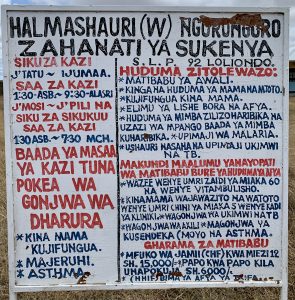
On the Dispensary sign, we noticed that the hours for the clinic were listed as 1:30 ASB. – 9:30 Alasiri. The guide explained that few Maasai have timepieces, but so close to the Equator, they know that the sun rises at about 6:00 every morning. So the clinic opens one and a half hours after sunrise (7:30 am) and stays open until 3:30 in the afternoon. It works. What sometimes don’t work are the batteries for storing solar power and the pumps for the water. No power grid here to rely on.
To repay Maasai hospitality we invited twelve women over to our camp to talk about marriage, At Eliza’s request, I had brought along a few pictures from my own wedding 53 years ago to serve as an icebreaker. None of the American women in our group had been married that long, but one of the Maasai women had. Along with her husband’s other wives, she counted sixteen children! They seemed surprised that we had children later in life than is their custom. With the help of a translator, the discussion ranged from arranged marriages (now being replaced by freer choice) to birth control. One grandmother, who was a superb storyteller, let me try on the necklace two daughters had made in honor of her long life. Click on Perspectives on Africa for more.
Now it was the Maasai men’s turn. A group of warriors showed us their jumping ability.
My friend Kate took the challenge and jumped high, too.
On the last day of our stay at Enashiva we had a chance to shop at a large display of beaded items made by the Maasai Women’s Cooperative. After a joyous welcome, we selected items, then gathered in a roofed building to bargain a bit on prices. One girl was especially good at keeping sales records. Courtney bought some lovely earrings; I bought several beaded baskets and coasters.
After three days at Enashiva, we drove across Serengeti National Park to Robanda, a camp just west of the Park, with the Ikoma tribe nearby. Again, we enjoyed comfortable tents, good food, contact with Ikoma people, and daily visits to the Park. The Park was overwhelming. I took pictures of all the displays in the Park headquarters and put them in this album for further study. Reviewing them now, I understand better the time sequence of Tanzanian history–from being an Oman Sultanate in 1806, to German colony in 1890, to British Protectorate, 1919-1961, and now its own nation. Compared to the National Parks I had recently visited in Colorado, where the entrance fee was $25 per car per day, the Serengeti Park charged $60 per person per day. We were happy to do our part to support a World Heritage Site.
Here are my best photographs from the Serengeti, with descriptions by Isak Dinesen from her book, Shadows on the Grass, which I found in Robanda’s library.
“a towering, overwhelming structure, massive as cast iron, and lithe as running water. The highest decoration of Denmark is the Order of the Elephant.”

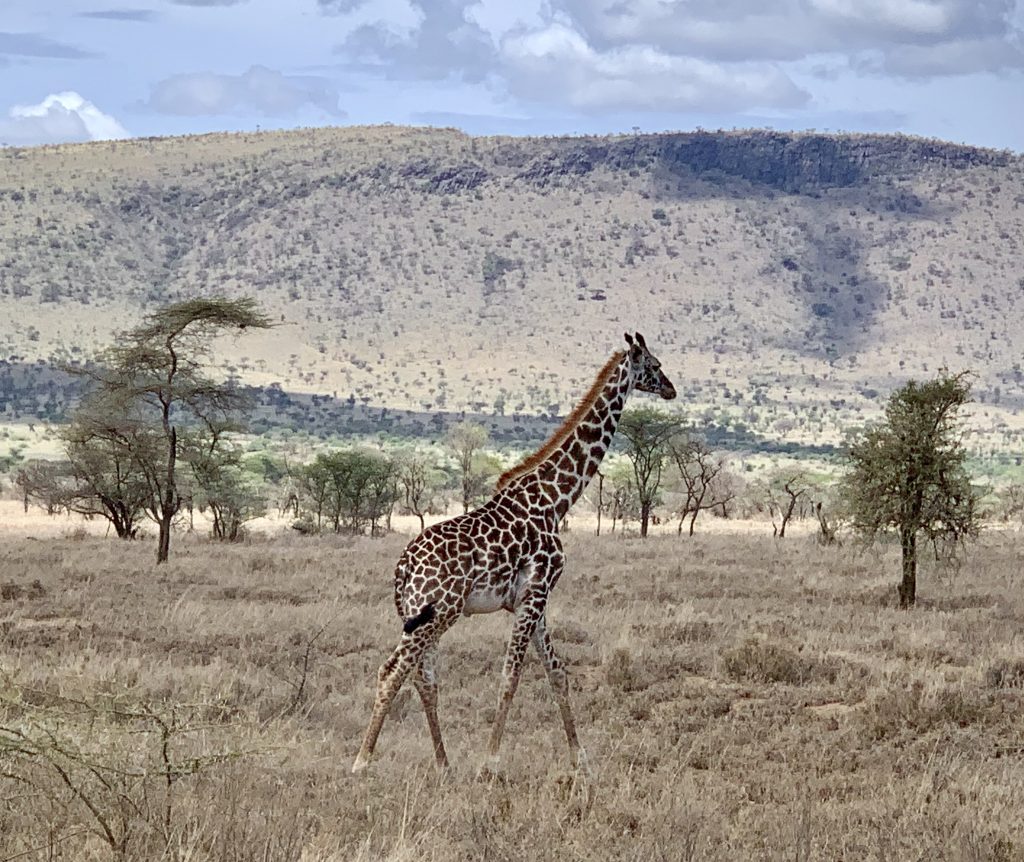
Besides these three, we observed thousands of others. Thanks to Nancy for the Thomson gazelle photo; they were too fast for me to capture.
As we roamed the Serengeti spotting animals, we learned some interesting facts:
- giraffes have the same number of vertebrae as humans
- a zebra’s pattern of stripes is as unique as a human’s fingerprints
- young zebras’ stripes are brown until they mature
- zebras’ backs are too weak to be ridden
- warthogs kneel to eat
- giraffes have very long tongues to get around the thorns on acacia trees
- candelabra trees have poisonous sap.
We enjoyed the interplay between male and female ostriches, the crafty stalking by lions, and the delicate draping of cheetahs on tree limbs.
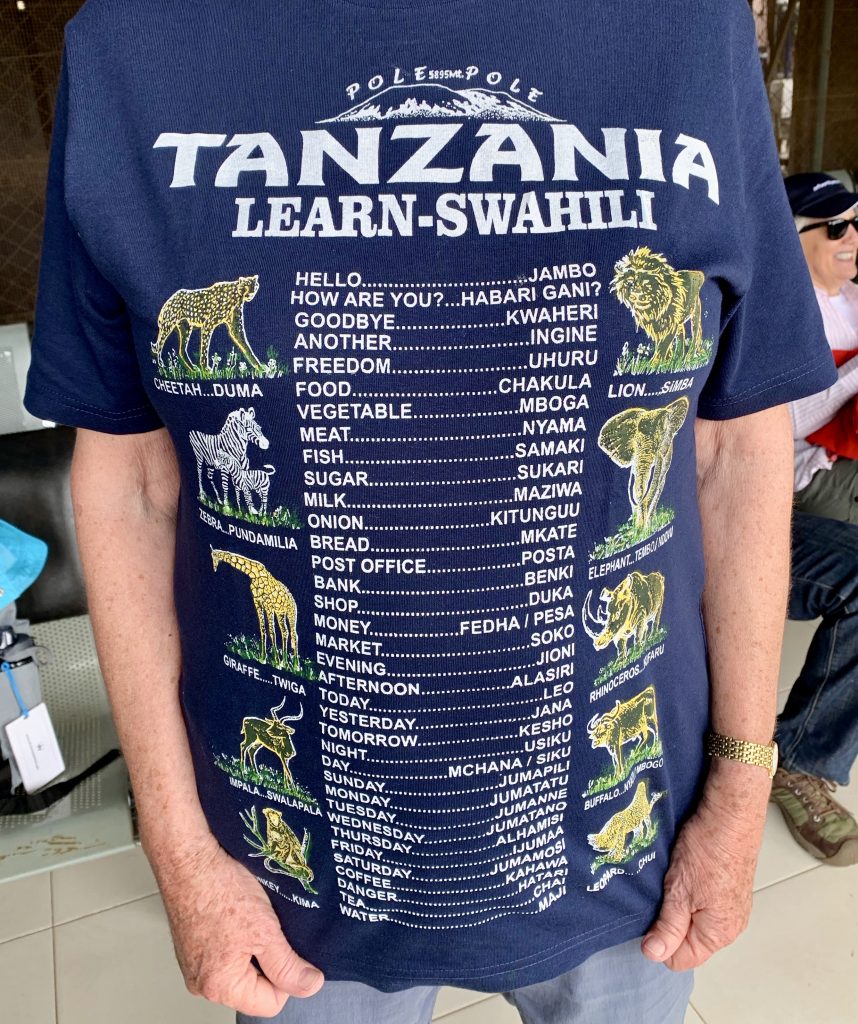 With a tee shirt I bought at the Arusha airport, I tried to learn some Swahili, a beautiful, easy-to-spell language, which is the national language.(there are also 120 tribal languages). The phrase that came up the most was from the movie, Lion King, Hakuna Matata = no worries. Another was pole-pole = slowly, slowly. I saw that painted on a street. On the right you can see the Big Five, the most difficult animals to hunt: lion, elephant, rhinoceros, buffalo, and leopard. We saw all five, if you count the hindquarters of a leopard and distant specks said to be rhinoceroses.
With a tee shirt I bought at the Arusha airport, I tried to learn some Swahili, a beautiful, easy-to-spell language, which is the national language.(there are also 120 tribal languages). The phrase that came up the most was from the movie, Lion King, Hakuna Matata = no worries. Another was pole-pole = slowly, slowly. I saw that painted on a street. On the right you can see the Big Five, the most difficult animals to hunt: lion, elephant, rhinoceros, buffalo, and leopard. We saw all five, if you count the hindquarters of a leopard and distant specks said to be rhinoceroses.
October 10, my grandson Stephen’s 12th birthday, was a big day for us in Tanzania. Six of us rose at 4:00 to travel to the launch place for a dawn balloon ride over the Serengeti. It was easy and fun, not scary at all, and concluded with a champagne breakfast. The most amazing moment was when we flew directly over a buzzard’s nest, utterly surprising the bird. He/She quickly flew away on widely stretched wings, astonished. The reason we went so early was that the winds pick up later on. The light was gorgeous.
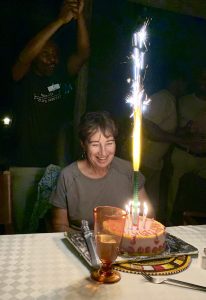 After more exploring in the Park, we had a gala dinner and celebrated Victoria’s birthday. The entire staff sang Jambo Jambo and presented her with a cake, complete with an umbrella to keep the sparkler from catching the thatched roof on fire. The next morning, we departed from Robanda and took a scenic 45-minute flight from Ikoma to Manyara airport. From there we checked into the lovely, luxurious Gibbs Farm and toured their extensive organic gardens. I even got a wonderful massage.
After more exploring in the Park, we had a gala dinner and celebrated Victoria’s birthday. The entire staff sang Jambo Jambo and presented her with a cake, complete with an umbrella to keep the sparkler from catching the thatched roof on fire. The next morning, we departed from Robanda and took a scenic 45-minute flight from Ikoma to Manyara airport. From there we checked into the lovely, luxurious Gibbs Farm and toured their extensive organic gardens. I even got a wonderful massage.
The next morning was the highlight of the whole trip for me. We left at 5:00 am to arrive at the Ngorongoro Crater, another World Heritage Site, when it opened at dawn. I remembered from anthropology classes at Rice that the Rift Valley was where so many fossils of early hominids had been found. There we were in the “cradle of humankind.” [Please see my post, Africa: History & Geography.] Here, thanks to Easy Travel, is what makes Ngorongoro Crater so amazing:
Three million years ago, there slumbered a massive supervolcano in what we now call Northern Tanzania. The mountain stood higher and mightier than nearby Mount Kilimanjaro. Its summit scraped the ceiling of Africa and its slopes were so vast they directed their own weather patterns and water flow. All was well with this sleeping sentinel until one day the mountain woke up. Then it fell down.
The volcano erupted with a blast so ferocious that it caved in on itself, an implosion creating a caldera spanning a hundred square miles: 12 miles wide and 2,000 feet deep. What had once claimed the highest peak on the continent was now a mere impression, inverse to its former glory.
But the glory returned. Over the course of a few million years this geologic divot filled with life. First, it caught pockets of fresh water. Second, lush vegetation developed, and third—you guessed it—the wild ones arrived. Abundant water and grasses attracted ungulates, large predators, and countless bird species. Because of its enclosed topography, animals would descend into this bowl-shaped place and never leave. This was where the party was.
Over time the caldera teemed with sustenance, while also providing grazing lands for human tribes living along its edge. And so began the story of one of our planet’s most beautiful places, an unprecedented coliseum of biodiversity. Welcome to the Ngorongoro Crater.
Driving through the morning mist on the high edge of the crater, catching fleeting glimpses of the caldera below us, took my breath away. I felt like I was entering the Garden of Eden. It was a religious experience that brought tears to my eyes. My iPhone was challenged to record the scope of the crater, but at our picnic spot, I was able to take portraits of a bird and a monkey in their own paradise.
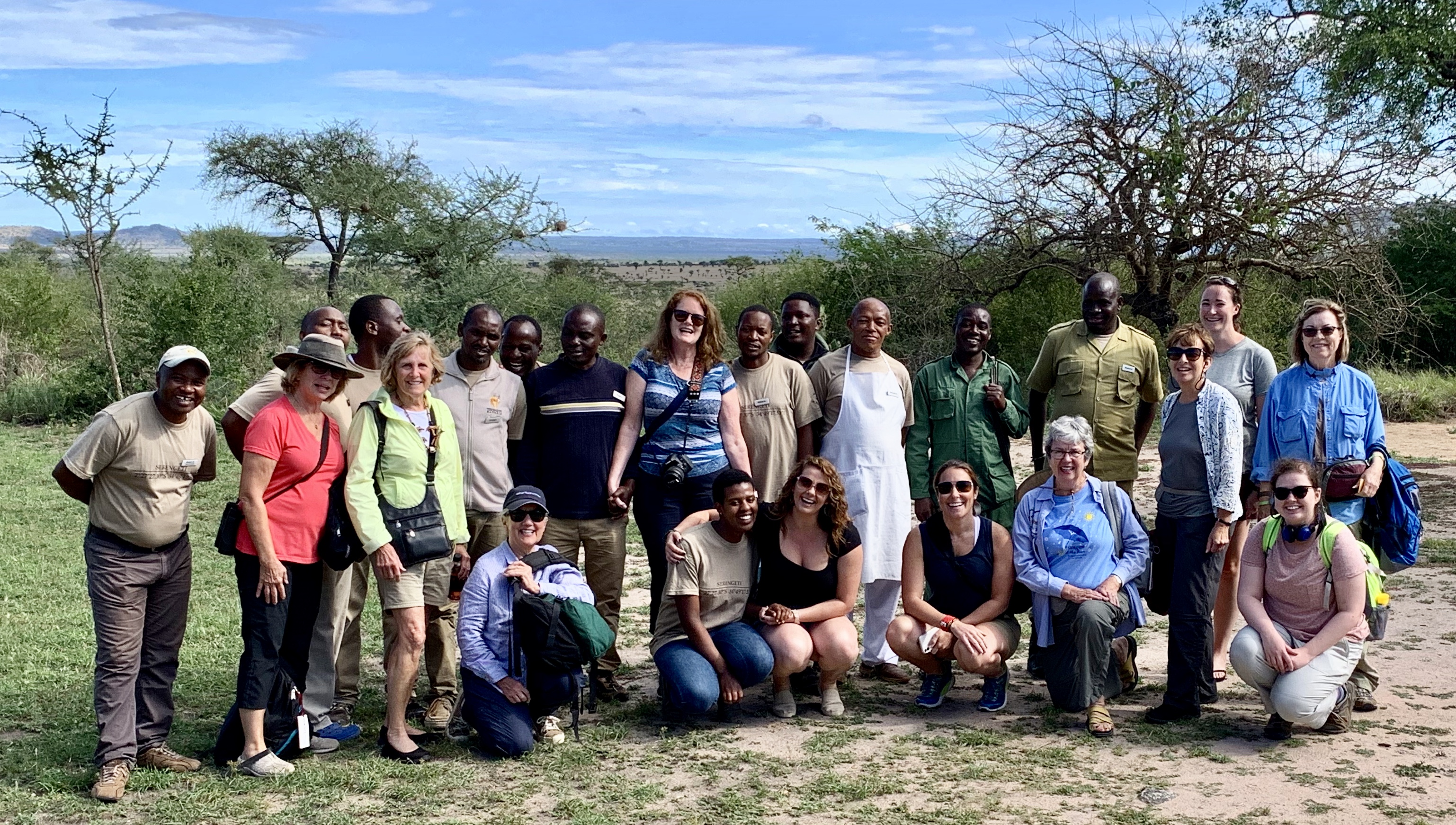
At our farewell dinner at Gibbs Farm I realized how I had enjoyed traveling with adventurous women! Now I had to say goodbye to Kate, Martha, Juanita, Allison, Victoria, Nancy, Meg, Meagan, Courtney and Eliza. The next morning Freddy drove us back to Arusha, where he lives with his family. We picked up souvenirs at the Cultural Heritage Center and relaxed at a day room in the Mount Meru Hotel (dependable WiFi at last!), before catching our flights back home. This trip took me millions of years back in time, connected me to the entire Animal Kingdom, and caused me to fall in love with the people of Tanzania.
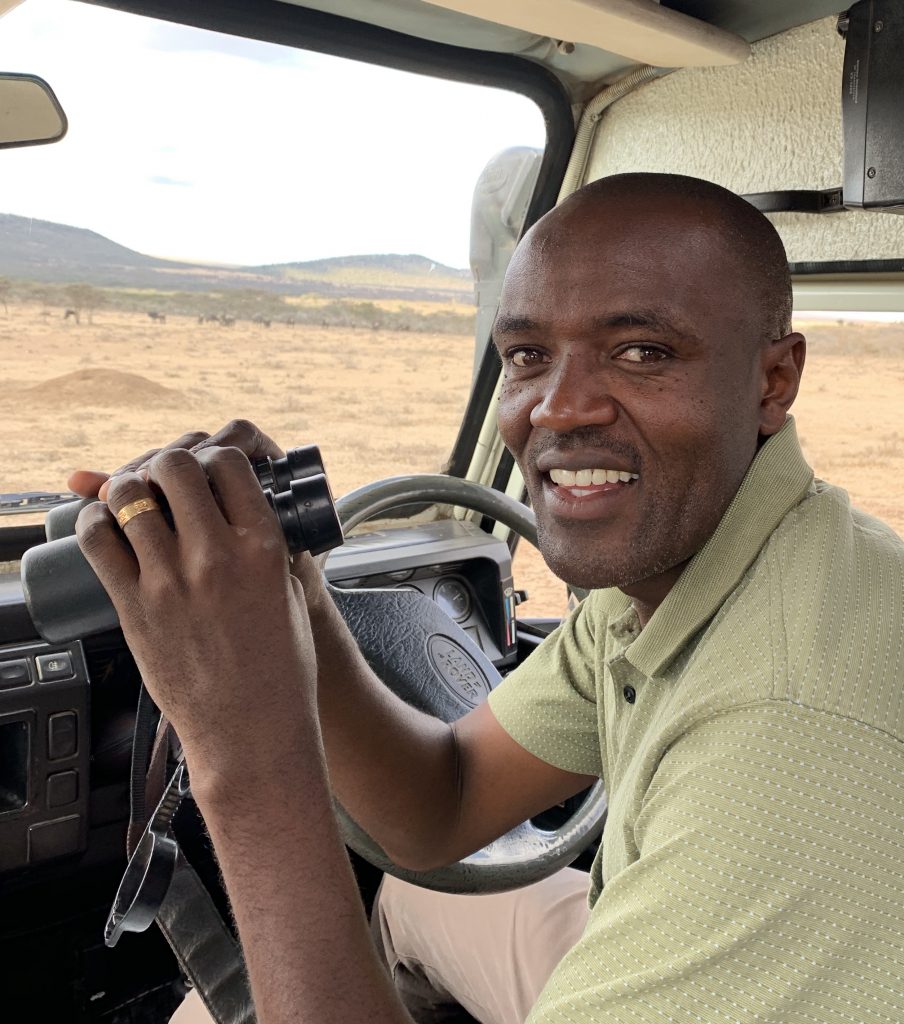

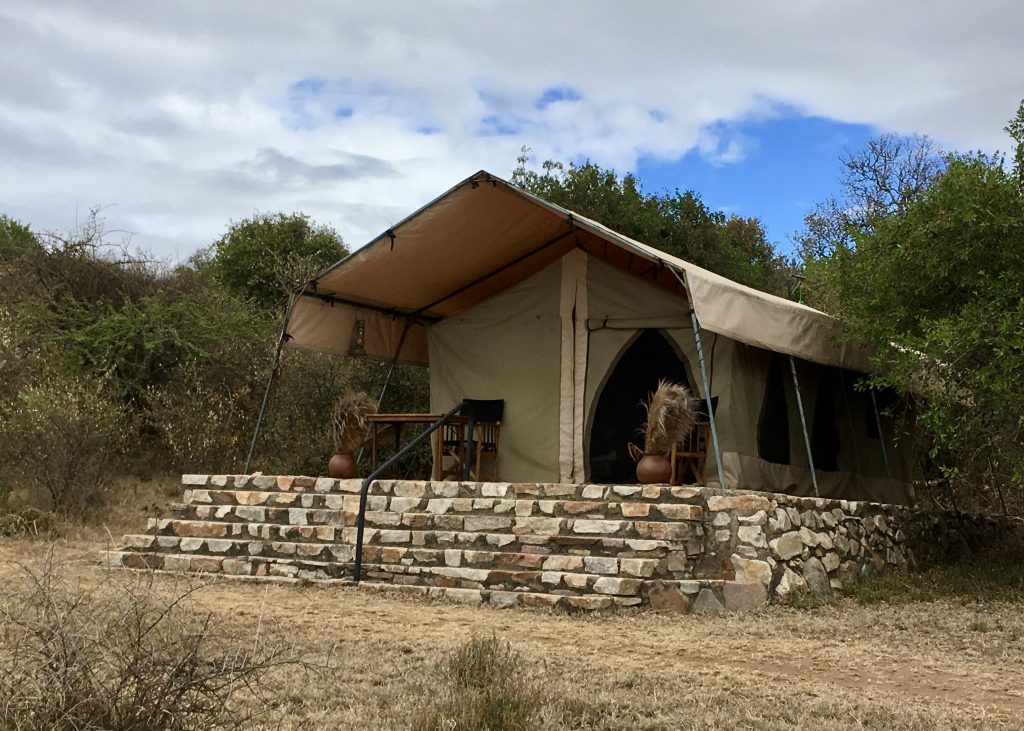
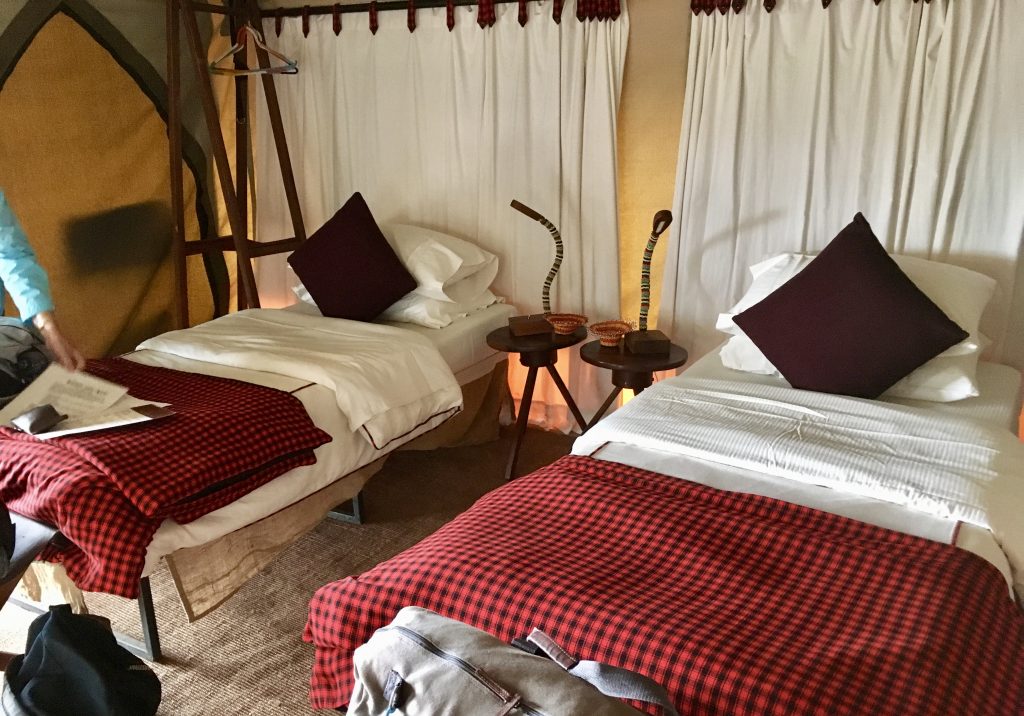
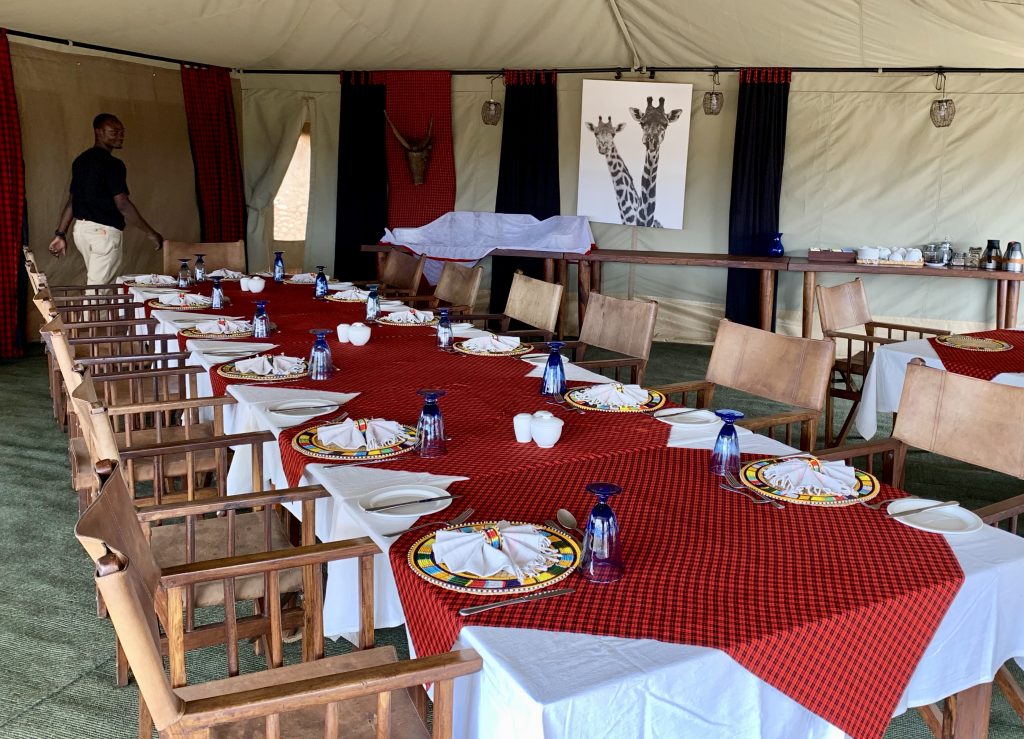
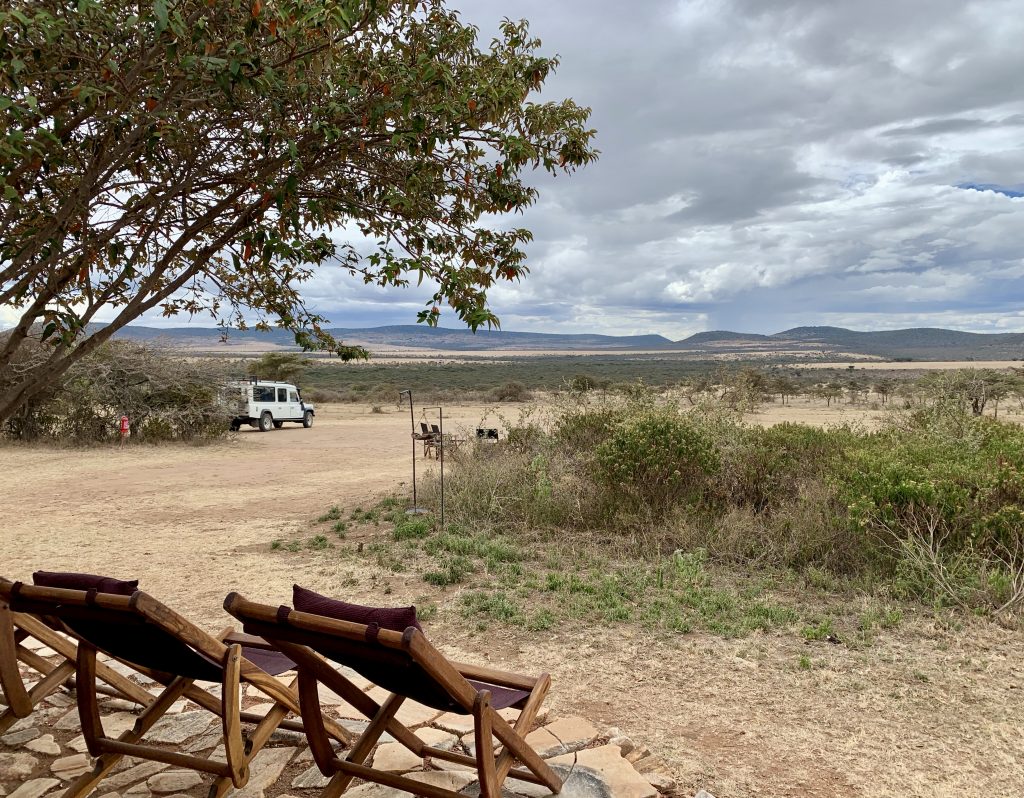
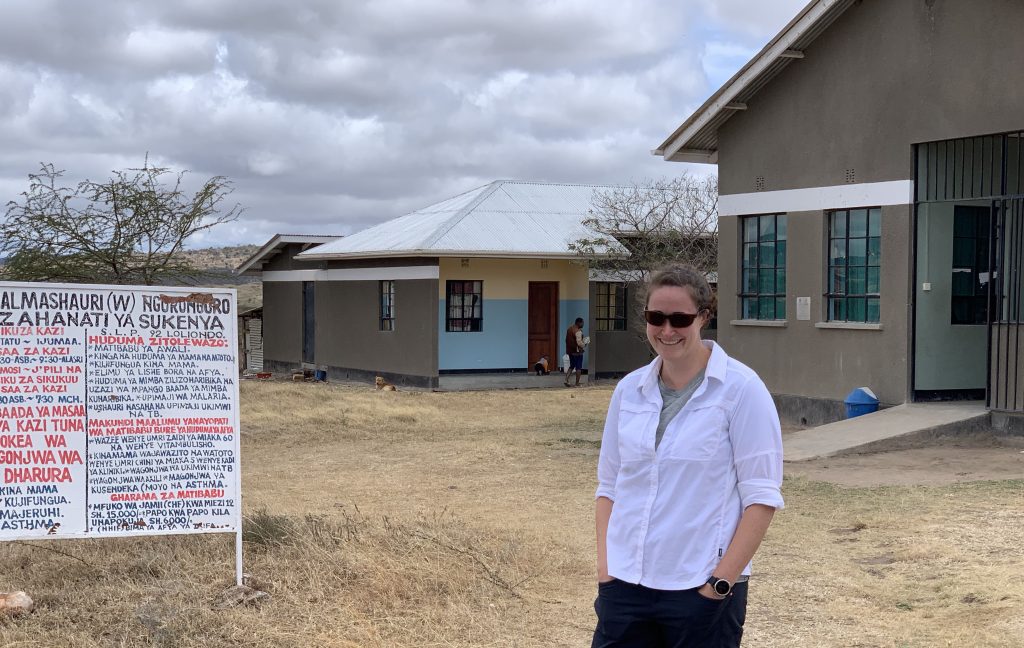
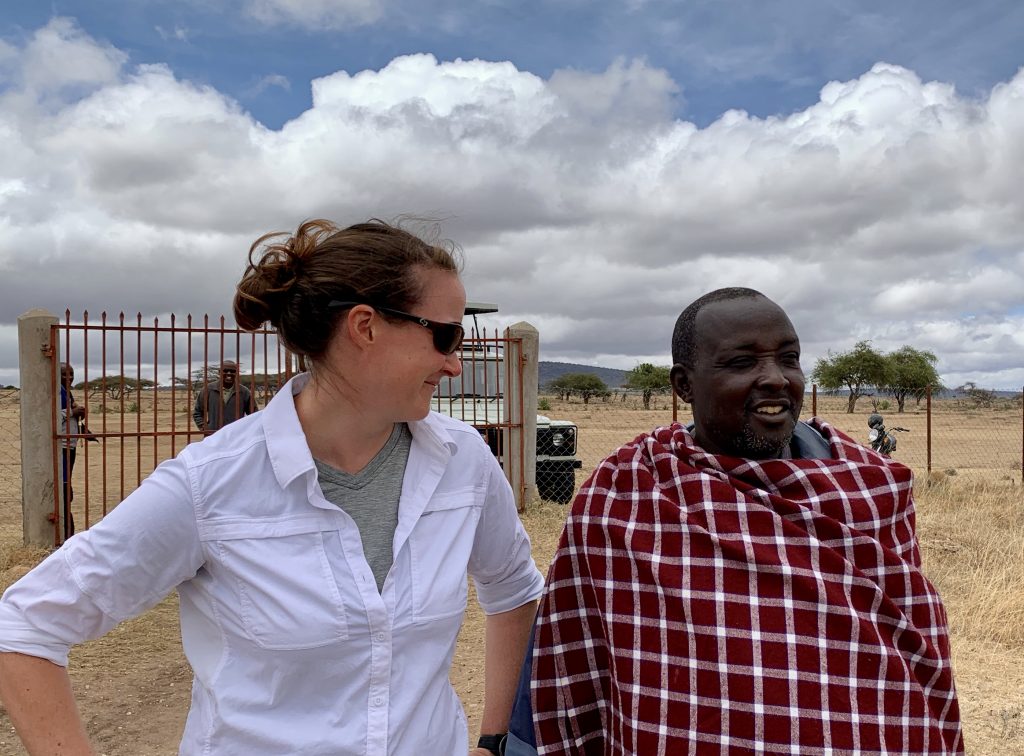
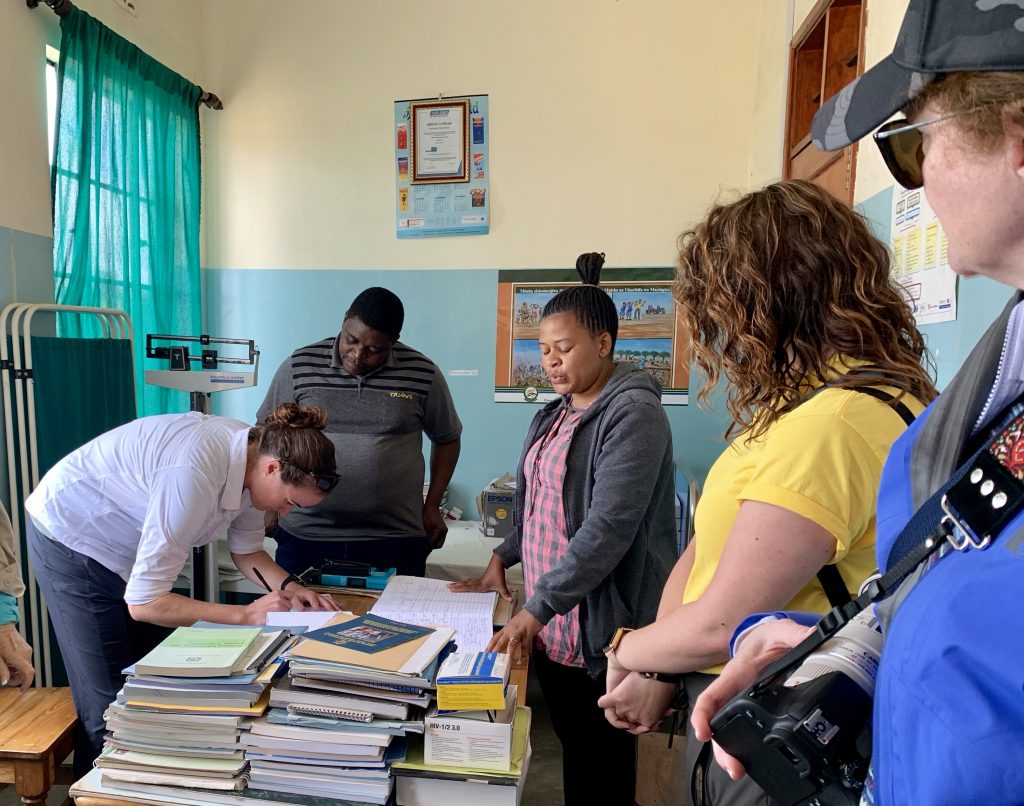
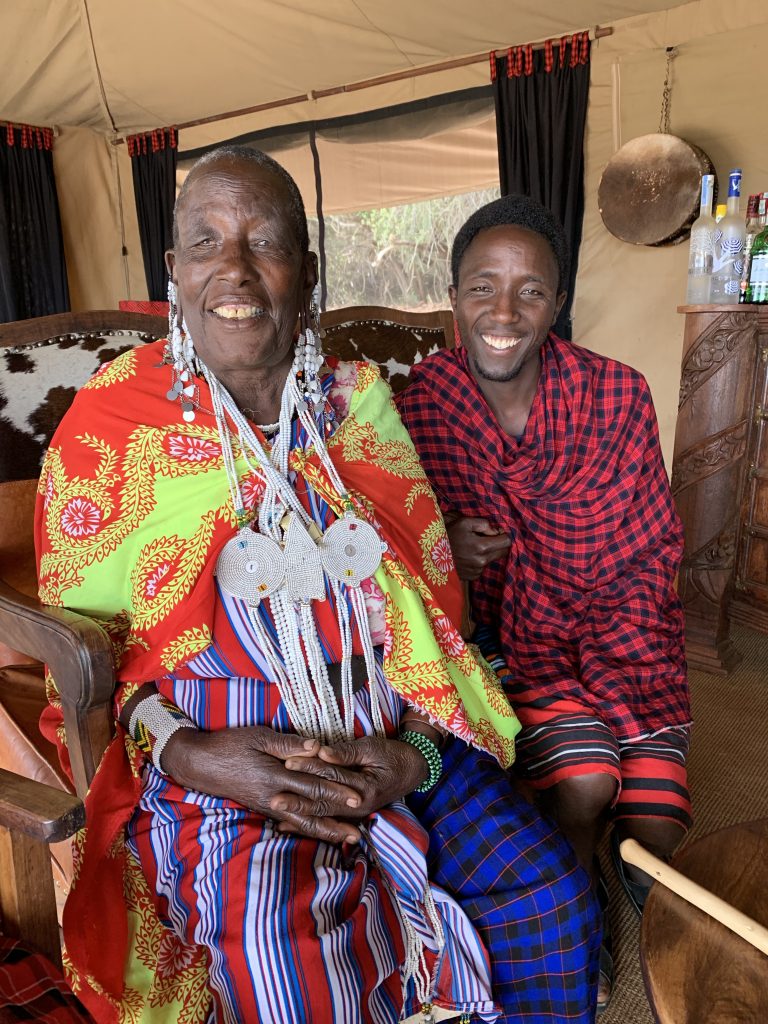
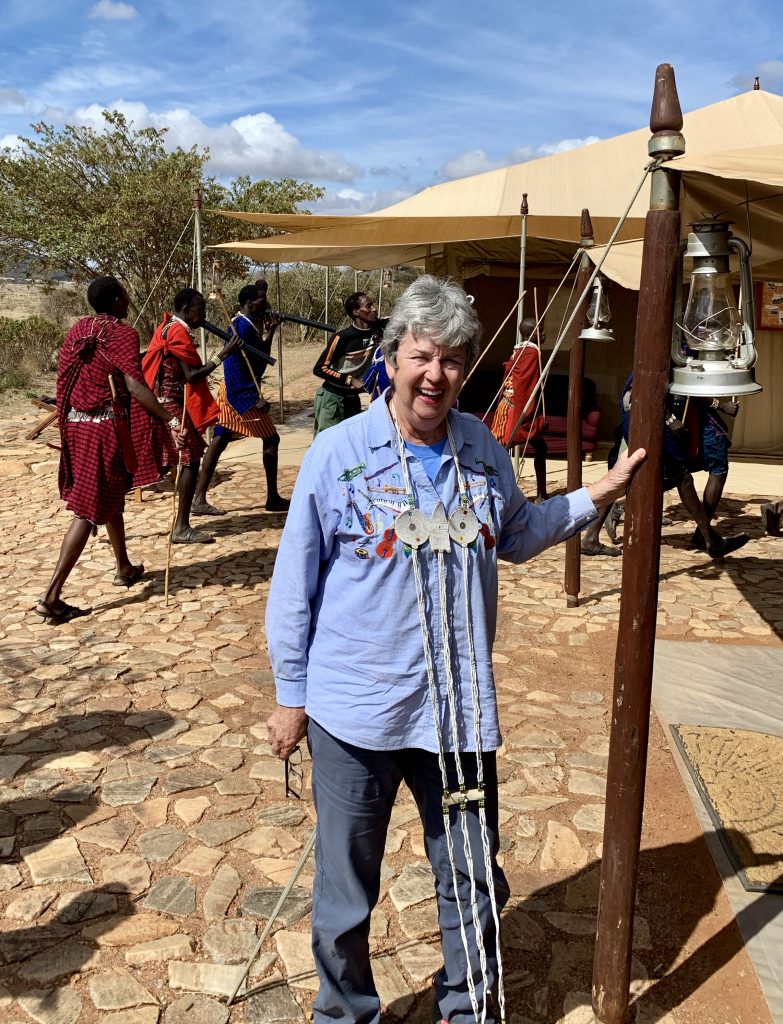
Leave a Reply